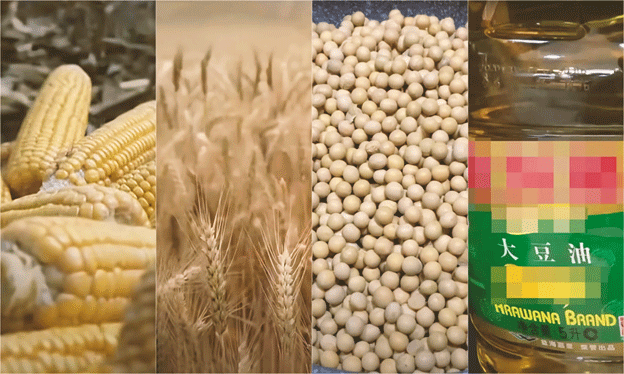On September 16, 2024, Chicago Board of Trade (CBOT) wheat futures retreated from a three-month high, yet remained supported by concerns over European crop yields and escalating tensions between Russia and Ukraine. Simultaneously, U.S. corn and soybean futures saw declines as harvest season kicked off, indicating market adjustments in response to global supply risks and bumper U.S. harvest expectations.
Wheat Market Dynamics
CBOT wheat futures dropped 0.3% to $5.93 per bushel, retreating from a recent high of $5.99, achieved just days earlier. Over the past three weeks, wheat prices have surged by nearly 13%, driven largely by a weakening U.S. dollar, which made American grain more competitive in global markets.
The European outlook, however, remains bleak. Analysts, including Arlan Suderman, predict a potential cut of 4 to 6 million tons from soft wheat production estimates, with further reductions possible. In Russia, one of the world’s largest wheat exporters, crop quality and quantity are also at risk. Adding to the complexity, tensions in the Black Sea region continue to pose threats to the global wheat supply chain. Last week, Ukraine accused Russia of launching missile strikes on a grain ship, sparking fears of further export disruptions.
With both Russia and Ukraine playing pivotal roles in global wheat exports, any interruption in their supply could have significant ripple effects on global markets, keeping wheat prices buoyant despite recent pullbacks.
Corn and Soybean Markets
CBOT corn futures fell 0.7% to $4.10 per bushel, and soybean futures declined 0.3%, closing at $10.03 per bushel. U.S. harvest season is approaching full swing, with the U.S. Department of Agriculture (USDA) forecasting one of the largest soybean crops on record, despite a slight reduction in earlier estimates. Corn production, meanwhile, is projected to be the second-highest ever.
Adding downward pressure to soybean prices, August crushing volumes dropped over 6%, attributed to seasonal plant maintenance and factory shutdowns. The National Oilseed Processors Association (NOPA) is expected to release detailed data soon, which will shed light on the extent of this slowdown.
Technical Market Trends
While wheat prices have retreated from their recent peak, technical analysis suggests there is still upward pressure, particularly as uncertainty over European and Russian supplies lingers. A potential breach of the $5.99 resistance level could see wheat prices rise further, especially if Black Sea tensions escalate.
Corn prices remain in a consolidative phase, hovering around $4.10. Despite U.S. harvest expectations weighing on the market, recent short-covering actions by speculators have mitigated further price declines, signaling a potential shift to neutral sentiment.
Soybean futures, trading near $10.03, face both seasonal and global supply pressures. Technically, the $10 per bushel level serves as a key support, and any breach could lead to additional selling pressure in the market.
Global Market Factors
Geopolitical tensions between Russia and Ukraine continue to dominate market sentiment, particularly in the wheat sector. With Ukraine accusing Russia of further attacks on grain shipments, any developments in the region could spur short-term volatility in wheat prices.
Additionally, adverse weather conditions in Europe are compounding crop production issues. Strategie Grains and the USDA have both lowered soft wheat yield forecasts for the European Union, but higher global wheat ending stocks forecast by the USDA are expected to limit extreme price swings.
Meanwhile, U.S. corn and soybean harvests are set to ramp up. Strong global demand for these crops persists, but the sheer volume of supply is putting a lid on prices for now. The U.S. is forecast to produce a record soybean crop and one of its largest corn crops in history, with harvest progress likely influencing market movements in the coming weeks.
Analyst Insights
According to Arlan Suderman, the key driver for wheat prices remains the reduced output in Europe and Russia. He expects the market to closely monitor Black Sea geopolitical developments in the weeks ahead, which could impact both Russian and Ukrainian export capabilities.
On the broader grain market, analysts agree that while supply risks continue to support wheat prices, the upward revision of global wheat inventories by the USDA may curb excessive price volatility. Corn and soybean prices, however, are expected to face short-term downward pressure due to the U.S. harvest but could find support from long-term demand.
The Chicago grain market is currently shaped by a blend of global supply concerns and domestic harvest expectations. While wheat prices remain vulnerable to geopolitical risks and European crop struggles, the U.S. corn and soybean markets are facing harvest pressures. As tensions in the Black Sea continue and the U.S. harvest progresses, further market volatility is expected, making it crucial for market participants to stay updated on these shifting dynamics.
Error





